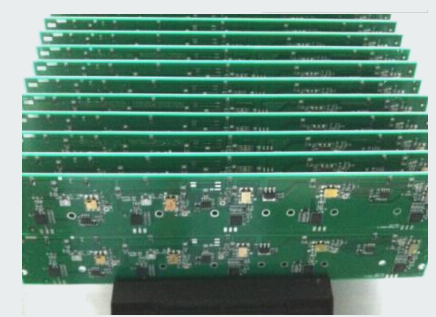With the increase in PCB signal wiring, electromagnetic compatibility (EMC) design has become a critical issue that electronic engineers must address.
When tackling EMC design, and performing EMC analysis on products and designs, the following five key attributes should be considered:
(1) **Size of the Key Device**: This refers to the physical dimensions of the emitting device responsible for generating radiation. The radio frequency (RF) current will create an electromagnetic field, which may leak through the chassis and potentially radiate away from it.
(2) **Impedance Matching**: This involves the impedance of both the source and the receiver, as well as the transmission impedance between the two.
(3) **Time Characteristics of the Interference Signal**: The issue here is whether the interference is a continuous (periodic) signal or occurs only during a specific operational cycle (e.g., a one-time button press, power-on interference, periodic disk drive activity, or burst transmissions in a network).

(4) **Interference Signal Strength:**
The strength of the interference signal depends on the energy level of the source and its potential to cause harmful disruption.
(5) **Frequency Characteristics of Interference Signal:**
During PCB prototyping, a spectrometer is used to observe the waveform and analyze the spectrum’s position, which helps to locate the source of the issue. It is also important to consider low-frequency circuit design practices. For instance, single-point grounding may be ideal for low-frequency applications, but I later discovered that it is unsuitable for RF signals due to the increased EMI problems that arise with RF circuits.
Some PCB engineers may use single-point grounding in all designs without realizing that this approach can introduce more complex electromagnetic compatibility (EMC) challenges. Additionally, attention must be given to the current paths in circuit components. Understanding circuit behavior in Shenzhen PCB prototyping, we know that current flows from higher to lower potential, always traveling through one or more paths in a closed-loop circuit. Therefore, minimizing the loop size is a crucial principle. In cases of interference current, PCB traces should be modified to avoid affecting load or sensitive circuits.
In applications that require a high-impedance path between the power supply and load, all possible return current paths must be carefully considered. Another important factor is PCB trace impedance, which includes resistance, inductance, and high-frequency impedance, all of which have little tolerance. When the signal frequency exceeds 100 kHz, traces behave inductively, and when operating above audio frequencies, they can act as RF antennas.
For EMC compliance in Shenzhen PCB prototyping, the design should avoid traces operating below λ/20 of a specific frequency (with the antenna’s design length being λ/4 or λ/2). If traces unintentionally form high-performance antennas, it can complicate future debugging.
**PCB Layout Considerations:**
First, consider the size of the PCB. If the PCB is too large, the system’s immunity to interference diminishes as the circuit expands, leading to higher costs. If the PCB is too small, heat dissipation and mutual interference become more problematic.
Second, carefully plan the placement of critical components. For example, clock components should not be placed near key signal lines, and clock traces should be kept stable to avoid interference.
Lastly, the overall PCB layout should align with the circuit’s function. In the component placement phase, components that are functionally related should be placed as close as possible to each other, which helps to improve the system’s resistance to interference.
If your have any questions about PCB ,please contact me info@wellcircuits.com




